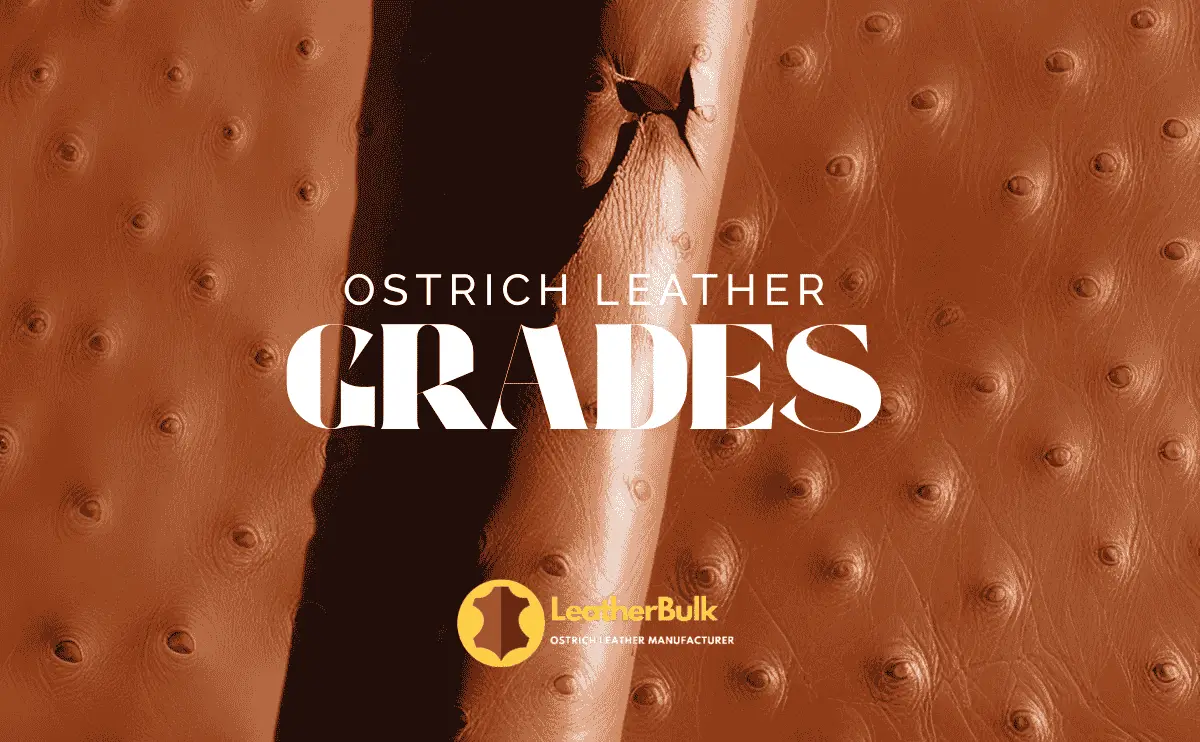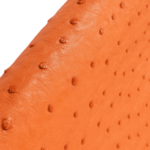Ostrich Leather Grades Explained: A, B, C, and D

Ostrich leather is known for its luxurious feel, signature quill pattern, and exceptional durability. But when you start shopping for it- or sourcing it for production—you'll quickly notice there's more than one type. That's where ostrich leather grades come in.
Grading is a crucial part of the ostrich leather supply chain. It ensures buyers and manufacturers understand the quality of the hide they're working with. Let's explore the four main ostrich leather quality levels and what sets each grade apart: A, B, C, and D.
What Affects Ostrich Leather Grading?
Before jumping into the grade categories, it helps to understand what factors affect the grading:
- Quill Pattern Density: The signature bumps (or follicles) in the crown area are one of ostrich leather's most desirable traits. A uniform and full crown increases the grade.
- Surface Quality: Any cuts, scars, holes, discoloration, or inconsistent texture will reduce the grade.
- Size and Usable Area: The larger the clean, usable surface, the higher the grade.
- Tanning and Finish: While not always included in grading, the finish and color uniformity can influence the material's final classification.
Grade A – Premium Quality
Grade A ostrich leather is the top-tier option and what most luxury brands aim for. It features:
- A full and even quill pattern across a large crown area
- Minimal to no visible defects or scratches
- Smooth texture and consistent color
- Excellent durability and soft hand-feel
This grade is often used in high-end handbags, designer shoes, watch straps, and other fashion accessories where aesthetics matter as much as function. Since only a portion of each hide qualifies as Grade A, it's also the most expensive.
If you want that unmistakable high-end look, Grade A is what you're looking for.
Grade B – High Quality, Slightly Less Perfect
Grade B hides are still excellent, but they may have:
- A slightly less dense quill pattern
- Small natural marks or minor inconsistencies in the surface
- Less symmetrical crown area
- A few areas that are better cut around during production
This type of leather is widely used in mid-to-high range products, where a bit of variation adds character without compromising quality. For belts, medium-sized bags, or footwear, Grade B ostrich leather often strikes the right balance between appearance and cost.
Grade C – Moderate Quality
Grade C ostrich leather is functional and attractive, but includes:
- Noticeable natural marks like scars or healed scratches
- Irregular quill distribution
- Slight unevenness in tanning or texture
These hides are more affordable and still offer the look and feel of genuine ostrich. Grade C is often used in wallet linings, small leather goods, or patchwork items, especially when the final product doesn't require a flawless front-facing surface.
For businesses looking to offer exotic leather at competitive pricing, Grade C is a practical option.
Grade D – Utility or Industrial Grade
Grade D is the lowest usable grade. It includes:
- Large scars, cuts, holes, or heavy grain inconsistencies
- Partial or poorly defined quill areas
- Uneven dye or discoloration
- Limited usable area
While this grade may not meet fashion standards, it's not useless. Many creative makers use Grade D ostrich leather in:
- Craft projects
- Interior components are not visible to the user
- Leather accessories with a distressed or rustic look
It's also a good option for brands looking to upcycle or experiment with texture-heavy designs.
Why Grades Matter for Your Business?
Whether you're buying a few hides or sourcing them in bulk, knowing the different ostrich leather grades helps you:
- Choose the right material for your product's quality and price point
- Avoid surprises when ordering from tanneries
- Communicate clearly with manufacturers and customers
Let's say you're making a premium wallet. Chances are you'll want to use Grade A or B leather on the outside to give it that polished, luxurious look. But for the insulating, something like Grade C could do the job just fine without affecting the overall quality. On the flip side, if you're a maker working on smaller accessories or handmade items, Grade D might be a smart pick. It's more budget-friendly and has that raw, one-of-a-kind character some people actually prefer.
Wrapping Up
Ostrich leather is no doubt one of the most striking and versatile leathers out there, but it's not always flawless. That's why grading matters. It helps you choose the type of hide that best suits your design, your price range, and your brand's image.
From the smooth, clean surface of Grade A to the rugged charm of Grade D, every grade brings something different to the table. The key is understanding what those differences mean—and using that knowledge to make the right call for your product.
So next time you're buying ostrich leather, don't forget to ask about the grade. It can make all the difference in the final result.
Al Quoz Industrial Area, United Arab Emirates



